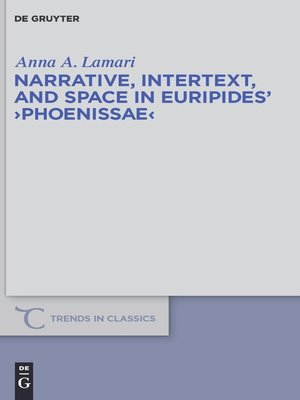Narrative, Intertext, and Space in Euripides' "Phoenissae"
ebook ∣ Trends in Classics--Supplementary Volumes
By Anna A. Lamari

Sign up to save your library
With an OverDrive account, you can save your favorite libraries for at-a-glance information about availability. Find out more about OverDrive accounts.
Find this title in Libby, the library reading app by OverDrive.



Search for a digital library with this title
Title found at these libraries:
| Library Name | Distance |
|---|---|
| Loading... |
Euripides' Phoenissae bears one of the richest tragic plots: multiple narrative levels are interwoven by means of various anachronies, focalizers offer different and often challenging points of view, while a complex mythical matrix is deftly employed as the backdrop against which the exploration of the mechanics of tragic narrative takes place. After providing a critical perspective on the ongoing scholarly dialogue regarding narratology and drama, this book uses the former as a working tool for the study and interpretation of the latter. The Phoenissae is approached as a coherent narrative unit and issues like the use of myth, narrators, intertext, time and space are discussed in detail. It is within these contexts that the play is seen as a Theban mythical ‛thesaurus' both exploring previous mythical ramifications and making new additions. The result is rewarding: Euripides constructs a handbook of the Theban saga that was informative for those mythically untrained, fascinating for those theatrically demanding, but also dexterously open upon each one's reception.







